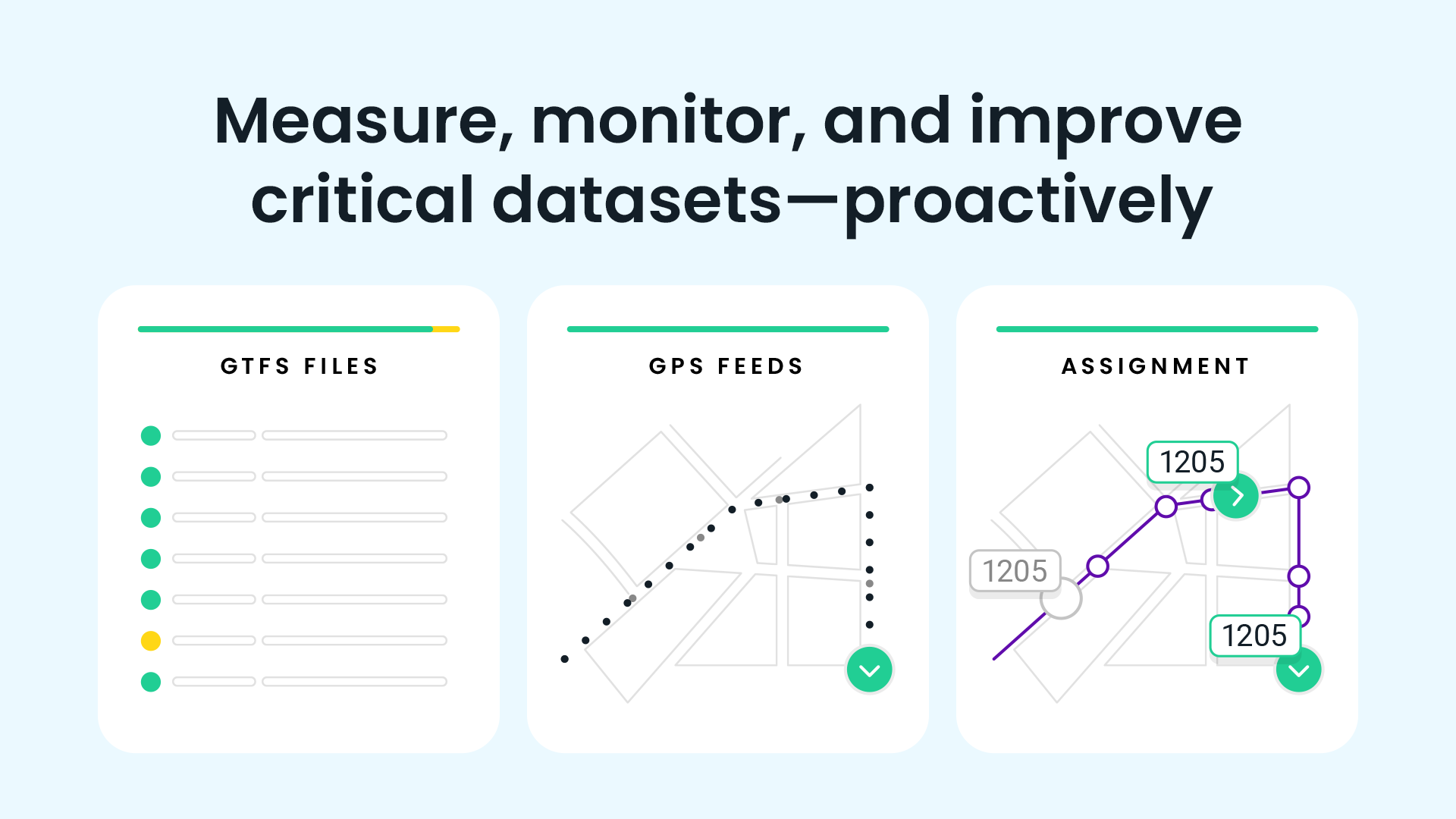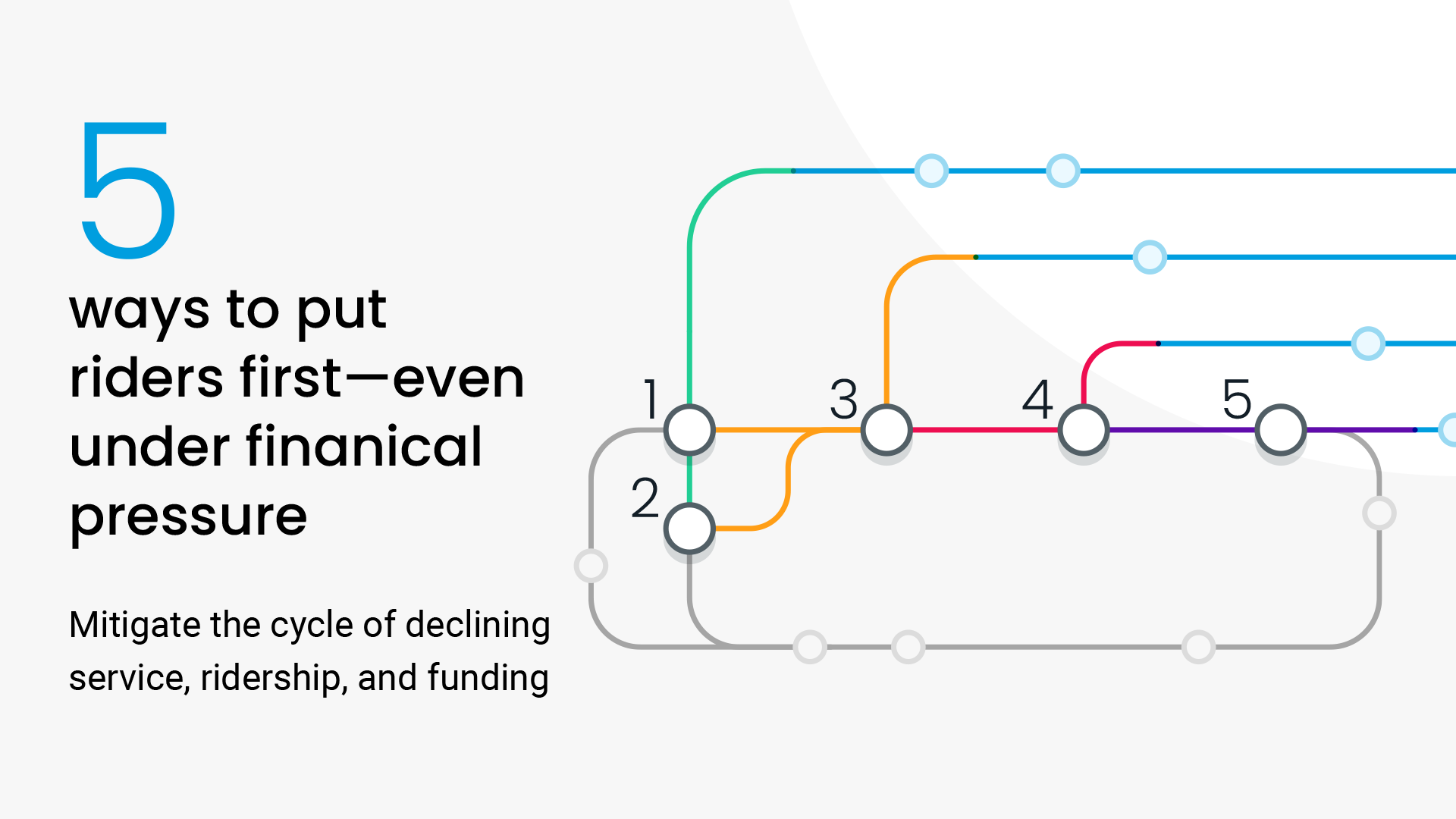
April 29, 2019
How the Power of Perception Will Win Back Transit Riders

April 29, 2019
How the Power of Perception Will Win Back Transit Riders
April 29, 2019
How the Power of Perception Will Win Back Transit Riders
For transit agencies, rider perceptions are everything
Scientists have known for decades that people over-rely on their personal experiences to explain the world around them. This may seem obvious, but it’s one of the most important concepts for any transit professional to understand if they’re aiming to improve ridership in their city.
If a bus comes late, even just once or twice, a person tends to conclude it always comes late. The power of perception is at play, and it’s hard to beat.
If agencies are serious about improving transit ridership in their cities, it’s essential to focus on the situations that most commonly leave a bad impression on riders. Here are some things every transit agency should consider carefully to use the power of perception to their advantage, not get caught in its harmful wake.
1. Long waits are bad, but long perceived waits are much worse
Riders have more choice than ever when it comes to traveling from point A to B: public transit, ride hailing, bikeshare, scooters, and private vehicles, among others. But studies show that people care less about mode than they do about the overall time traveled. Most passengers tend to choose whichever mode is quickest for them, based on the information they have.
But the power of perception complicates this a bit: actual travel time is oftentimes less important than perceived travel time for choice riders.
An unrelated example from a Houston airport baggage claim helps illustrate the point. Airline passengers consistently complained about the wait times for their baggage after landing. Airport staff took steps to speed up the process, and actually improved wait times by several minutes, but this had no impact on passenger satisfaction.
Passengers may have been getting their bags sooner, but they still spent 85% of their time waiting at the carousel. When airport staff increased the distance between the arrival gates and baggage claim (i.e. passengers spent their wait walking to the carousel), customer complaints plummeted. Customers perceived that the airport managed their baggage in a timely manner, which had a stronger impact than actual operational efficiency.
How does this relate to public transit? Perceived wait times are everything. Just knowing how long you’ll wait for a bus — and having confidence in that wait time — can significantly change your perception of how long you’re waiting. Passengers walking to the baggage claim in Houston felt their time was used better, even though they spent essentially the same amount of time prior to receiving their bags. Even if riders end up waiting for the same amount of time, with accurate real time information, their wait has a purpose — and they may even be willing to wait slightly longer than they otherwise would.
Accurate real-time information is essential to earning riders’ trust and keeping public transit top of mind when they’re choosing how to travel. More often than we give ourselves credit for, public transit is the best way for riders to get where they’re going. Of course, that’s assuming they have a complete and accurate picture of their options.
2. Don’t just know your stuff, show you know your stuff
As transit professionals, we know that transit agencies are made up of hundreds, sometimes thousands, of people all working together to deliver the best quality service they can. But to most riders, frontline staff — customer service representatives and vehicle operators — are the face of an agency.
When riders ask a question, they expect these staff to be prepared with instantaneous, accurate information. When customer service can’t answer knowledgeably, it’s game over. A study of factors influencing customer loyalty to public transit in Vancouver and Montreal showed that, especially for customers who have other mobility options, availability of information is a key motivator for choosing transit.
Real-Time Prediction Information (RTPI) for ‘where’s the bus?’ questions is the bare minimum most callers expect staff to have, and it can undermine credibility when they don’t. RTPI empowers staff as well as passengers to have granular, immediate information that presents them as effective and professional. Riders always weigh on-demand alternatives, so it’s important for agencies never to keep their riders waiting while looking up information.
3. Bad information almost always hides good service
The perceived quality of an agency’s transit service is only as good as its real-time information. At best, faulty real-time information can conceal quality service that would have otherwise worked for a rider, had they known about it. At worst, poor real-time information can cause riders to write off public transit altogether.
The stakes for accurate real-time predictions are high. If someone is running late to work, for example, they need to know the fastest way to get to the office — and they need to know now. If they choose wrong, it could jeopardize a shot at a promotion or even cost them their job.
And it’s not uncommon for incorrect real-time information to translate into an unnecessary Uber or Lyft ride. There’s nothing worse than looking up a bus arrival prediction, deciding it’s too far out, calling a Lyft, only to watch the bus go by before the car arrives.
If accurate real-time info isn’t readily available, most passengers assume there’s simply no way to reliably predict a bus’s ETA.
Use the power of perception to your advantage
The power of perception is a force that every transit agency should take seriously. When riders think transit service can’t fulfill their transportation needs, it’s effectively identical to it actually falling short.
The power of perception is a strong thing. It’s time to get it working for you, not against you.
Request a demo
The rich text element allows you to create and format headings, paragraphs, blockquotes, images, and video all in one place instead of having to add and format them individually. Just double-click and easily create content.
Last Name, Agency

What’s a Rich Text element?
What’s a Rich Text element?
What’s a Rich Text element?
What’s a Rich Text element?
What’s a Rich Text element?
The rich text element allows you to create and format headings, paragraphs, blockquotes, images, and video all in one place instead of having to add and format them individually. Just double-click and easily create content.
Last Name, Agency
Static and dynamic content editing
A rich text element can be used with static or dynamic content. For static content, just drop it into any page and begin editing. For dynamic content, add a rich text field to any collection and then connect a rich text element to that field in the settings panel. Voila!
How to customize formatting for each rich text
Headings, paragraphs, blockquotes, figures, images, and figure captions can all be styled after a class is added to the rich text element using the "When inside of" nested selector system.
- text goes here
- text goes here
- text goes here
- text goes here
- text goes here
- text goes here









